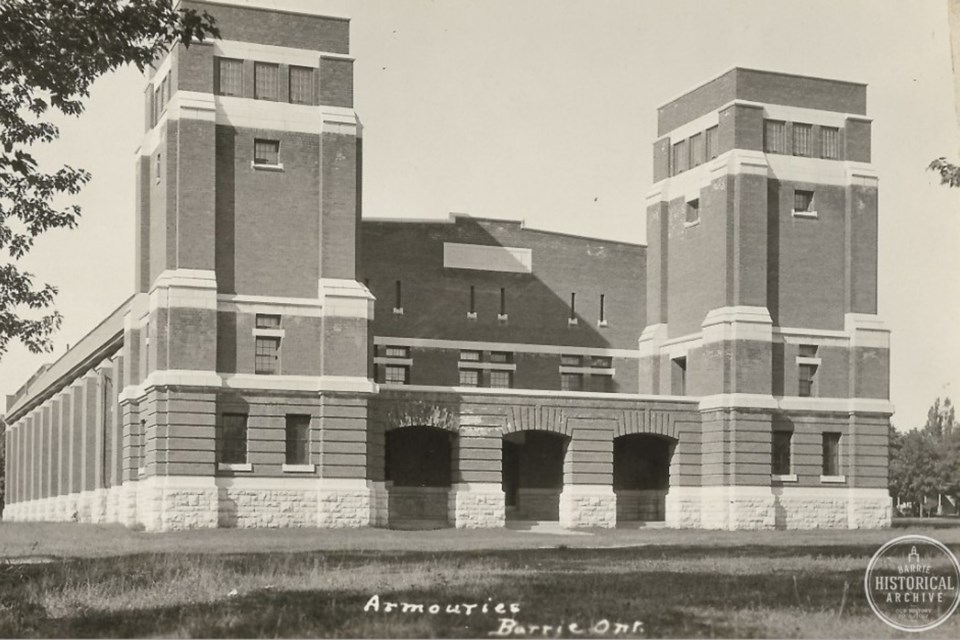The timing of William Freek’s arrival in Barrie was likely no accident. Presumably, Freek had heard about Barrie’s fiery reputation and brought his brick-making skills to a community desperately in need of more durable building materials for construction.
Beginning in the 1830s, a business district began to rise near the waterfront in Barrie. Soon, there were several blocks containing shops, banks, law offices, and hotels, all of them constructed with wood framing and plaster exteriors.
In the 1870s, fires destroyed each of them, one by one. The last of the original blocks, known in unflattering terms as the rookery for its ramshackle appearance, finally burned in 1880.
By that time, town council had wisely outlawed further construction of wood framed structures in the business areas centred around Dunlop and Bayfield streets. Rebuilds and renovations were also subject to the new regulations.
William’s father, James Freek, was born in 1818, in Selby, Yorkshire, England and came to Canada as a young man. He first settled near the emerging community of Richmond Hill.
Freek was a farmer but he supplemented his income by selling his handmade drain tiles and bricks. In time, he found himself employed by William Townsley, one of the pioneer brick-makers of the Toronto area.
Castle Frank Brook, a tributary of the Don River, has largely been buried or rerouted since Townsley’s day, but it was once an excellent source of clay, which supplied the Townsley brickworks at Yorkville. Townsley was also a Yorkshireman, a native of Skipwith, which is not too far from James Freek’s place of birth.
The outline of the old brickworks at Yorkville can still be seen today. After brick-making activities ceased there in 1890, the area became a garbage dump, but was later turned into Ramsden Park. The amphitheatre-like outline of the park clearly shows the place where many thousands of bricks were once made.
In 1842, James Freek married, Mary Townsley, his employer’s eldest daughter, thus creating somewhat of a brick-making dynasty.
William Freek, eldest son of James and Mary, also became a brick-maker. In 1867, William Freek married Isabella Clark and, shortly thereafter, the young couple migrated to Barrie where William set up his own brick-making business.
The Freek brickyard underwent several relocations and expansions over the years. An early location was rediscovered, as reported by the Barrie Examiner, in August 1923.
“In excavating for the sewer at the upper end of Mary St., a quantity of broken bricks are being dug up. This recalls the fact that Freek’s brickyard operated on the block bounded by Wellington, Toronto, Dalton and John Sts. over forty years ago.”
The products of the brick-maker’s labour are almost entirely anonymous. Countless structures in Barrie and beyond must surely be made from Freek bricks, but we will never know it.
It is known that he contributed to the building of the Post Office, the Grand Opera House, and the Armouries at Queen’s Park.
Even a brick-maker can experience the devastation of fire. In 1910, on a rather windy day, a steam powered tractor passed the yard and a spark from the engine set the Freek barn alight. Five hundred cords of wood and sixty tons of hay went up with the barn.
Neighbours and friends come together to raise a new barn within the month. Two years later, lightning struck the barn but only the roof was lost that time.
For a number of years, William Freek operated a large brick making venture on St. Vincent Street, which would become his final location.
In 1923, the brickyard and farm property on St. Vincent Street was sold to Andrew Cummings. Afterwards, William Freek moved to the home of his daughter, Mary Freek, on McDonald Street.
Each week, the Barrie Historical Archive provides BarrieToday readers with a glimpse of the city’s past. This unique column features photos and stories from years gone by and is sure to appeal to the historian in each of us.



